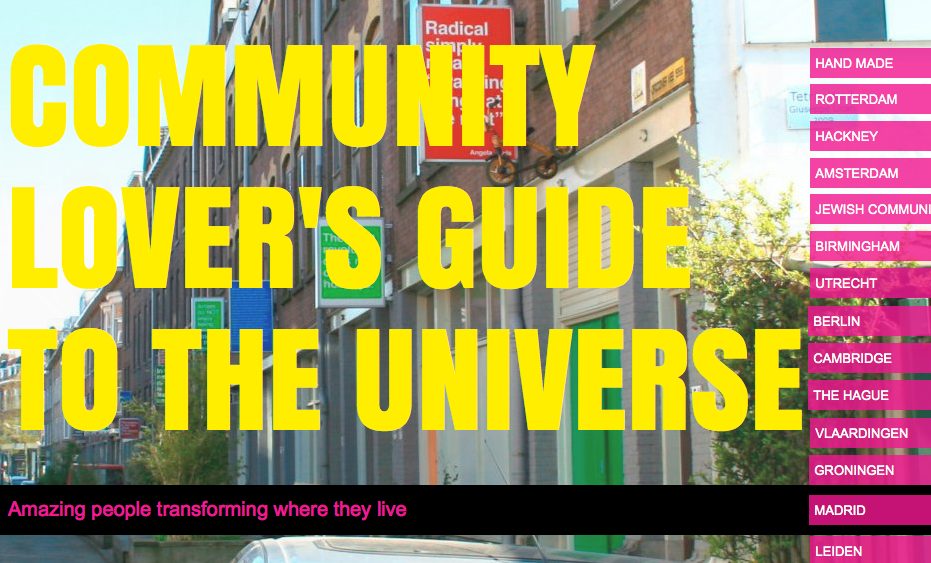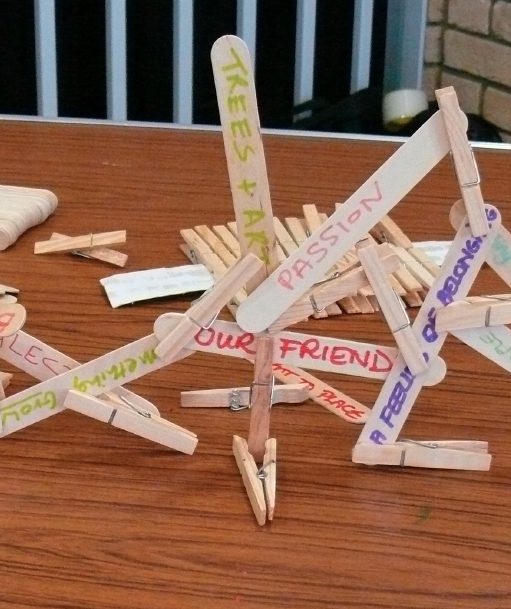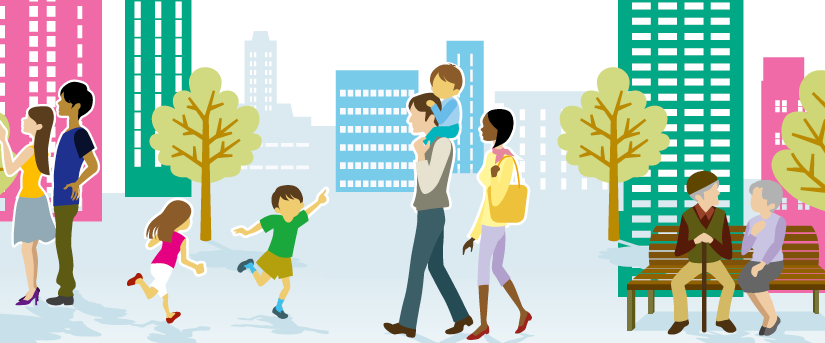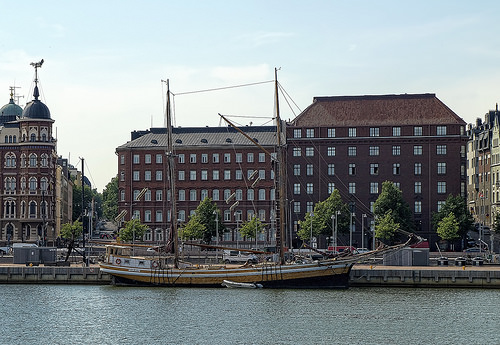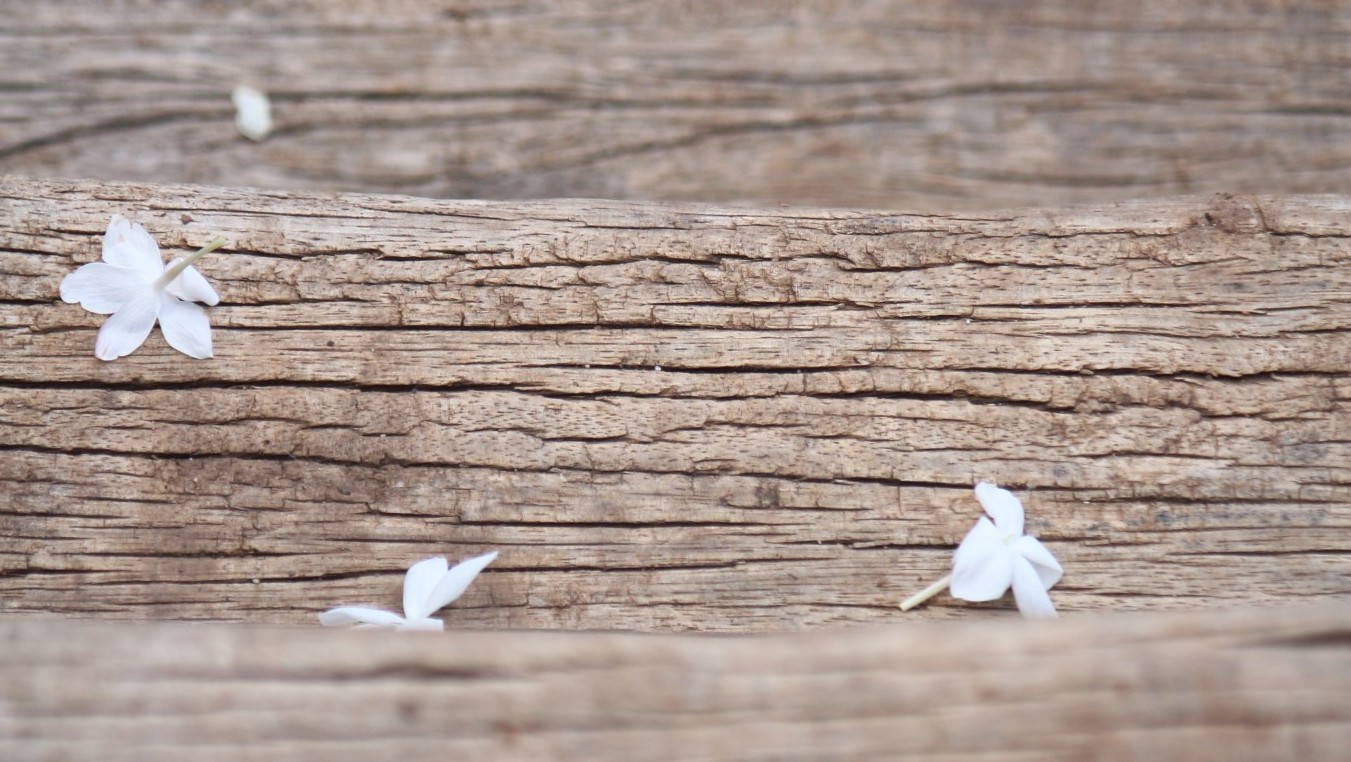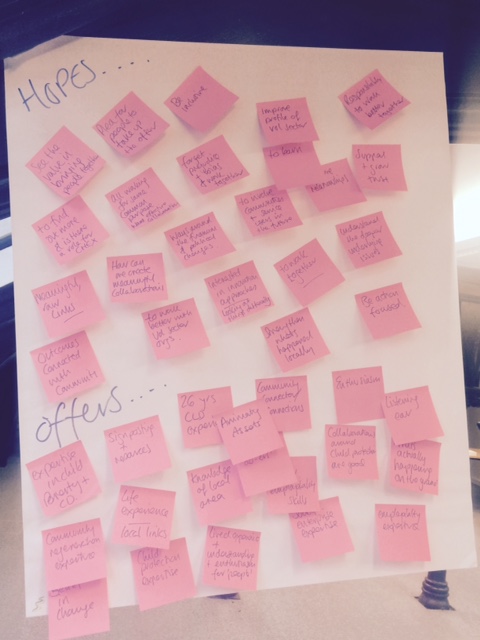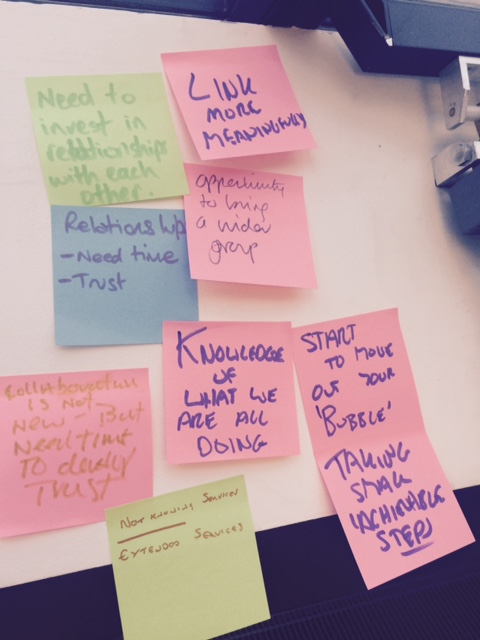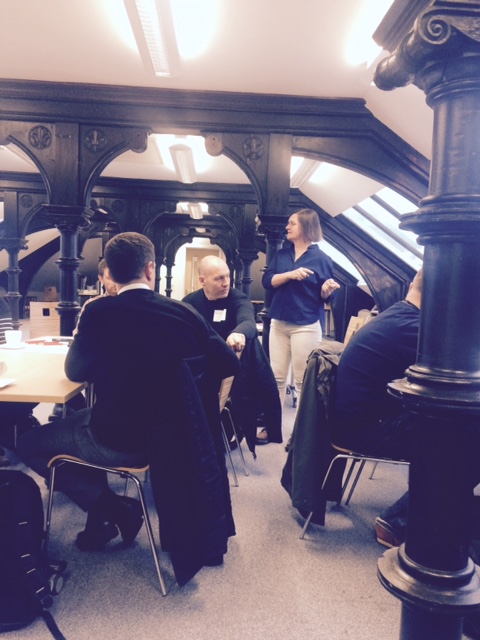This report from The King’s Fund Place-based systems of care argues that providers of services should work together to improve health and care for the populations they serve. This means organisations collaborating to manage the common resources available to them rather than each organisation adopting a ‘fortress mentality’ in which it acts to secure its own future regardless of the impact on others. It provides 10 design principles for place-based systems of care.
Community Lovers Guide to the Universe
The Community Lover’s Guide to the Universe is a growing collection of inspirations, stories and book editions, bringing together the experiences of many amazing people and their innovative projects – people who are actively and creatively making community, together. The website provides a collection of stories, blog posts and reflective essays on this emergent new community culture.
Creative Gatherings
Creative Gatherings provide a radical alternative to traditional meetings and have arisen from a range of arts based initiatives over the last decade. Using creative curation techniques to bring together groups of people to develop flat heirarchies and cultures of exchange, there is evidence that creative gatherings can generate new ways of working and new networks through creative practice. Creative gatherings have the following key features:
- a neutral and independent space for the exploration of ideas free from associations with a single agenda or group/institution
- a means to open up dialogue and generate new ideas
- inclusivity – diverstiy is prioritised
Creative Gatherings can influence a different kind of conversation through ‘holding’ a space that contains tensions and opposing views within it and yet, are flexible and inviting enough for participants to maintain that flexibility. Sharing food is also a common factor in encouraging new ways of working and sharing ideas more directly.
A recent example of this approach can be found in this case study from the RSA’s Citizen Power Peterborough
The Big Democracy Project
Run by National Theatre Wales, The Big Democracy Project explores how art and creativity can play a part in helping communities across Wales re-engage with the democratic process. The project aims to:
- ask big questions about our democracy;
- help Wales imagine the future it wants;
- make a real change to the lives of people in Wales and beyond; and
- instigate action through art.
Link to the full details here.
Place-based health – reform places, not organisations
This is a paper by Collaborate and the New Local Government Network that examines the health and well-being systems and England and advocates for a move to a more person-focused through a consideration of places and lifestyles. We like this thinking as it is moving away from the idea of integrating services as a solution to improving care, to integrating around what means most to people. There’s also a nice use of data visualisation to frame frame some of this thinking and the data behind it – see the full paper here.
A sense of relief (Glasgow)
Shortly after the session, it was announced that there would be a stand-still budget from the council for the preceding three months, which was thought to give the whole group more time to organise itself, as well as a sense of relief!
Following this, we agreed to go ahead and take forward the actions from the first session – to run two subsequent events – the first for organisations/representatives from the workforce, and the second a much broader public engagement event. The rationale for this was that for transformative collaboration to manifest itself we recognise that trust has to be developed and fostered between agencies, as well as between the community and the agencies who are there to serve them, with each working alongside each other to improve outcomes and achieve change.
We had the opportunity to discuss and agree this approach at a Connecting Milton Community Breakfast that took place in March. This was seen as a positive progression at Iriss, as the community breakfasts were established through the Animating Assets project, and which includes broad representation from a host of organisations engaging with the people of Milton (it also enables us to follow up with Love Milton, who had signed up, but who were unfortunately unable to attend the Stirling events).
The Helsinki Bus Station: Why staying the course is worth the frustration
Photographer Arno Rafael Minkkinen gave a speech about photography and innovation which we feel could be relevant to the work we do here at Iriss. His theory? That innovation doesn’t necessarily always come from the road less travelled, but from re-travelling routes over and over to feel inspired.
The Helsinki Bus Station
Minkkinen’s metaphor for creativity is the Helsinki bus station.
Helsinki bus station is the origin of lots of different buses. But despite each bus having a different destination, each bus takes the same route out of the city for at least a kilometer. It is only after this first kilometer that they begin to go in different directions.
Despite there being a variety of buses, each reaching different destinations, each bus shares the same first kilometer of its journey, no matter its destination. This means that even though people are going on vastly different journeys, the journeys all seem identical at first. The sights, sounds and experience is identical and feels too familiar to be inspiring.
The instinct when a person realises that they are on the same route as that they have have seen before, is to hop off the bus and return to the station, to take a different bus. The passenger wants to be inspired by new sights, to do new things. But, of course, the next bus from Helsinki bus station takes the same route.. And the cycle continues.
So what needs to change for inspiration to happen?
Stay on the bus!
Minkkinen suggests that creativity emerges when you stay on the bus, and begin to see the same sights from a different perspective. Old sights are renewed through the journey and the bus ultimately continues to a new destination.
Staying on the bus is a challenge because it feels as if creativity can only emerge from the new. But it’s from the repetition of similar routes that creativity really emerges. From Minkkenen’s perspective, “we should stay on the bus and commit to the hard work of revisiting, rethinking, and revising our ideas.” The act of revisiting and revising isn’t ‘new’, but innovation doesn’t always emerge from new ideas.
What does this mean for us?
A strive to be ‘new’ shouldn’t be at the expense of revisiting existing routes. Often, at the beginning of a project there is enthusiasm for new approaches and a reticence to revisit old ideas. For example, we may not want to engage or consult with a group if we have recently done so, or we may not want to address an issue where there has been other activity.
Often, creativity is born out of revisiting and revising old ideas, staying on the bus rather than looking for something new. The challenge of the big idea was to stick with the process, examining and reexamining an idea of community engagement and better lives.
Reflections on the Big Idea
For Iriss, ‘staying on the bus’ was about pushing for collaboration and partnership throughout the project, even when it felt repetitive. The feedback from our very first event was that the model collaboration we were describing was ‘old news’, and our response was to stay on the bus and push for more meaningful and more effective collaboration through partnership.
In fact, our role was to challenge and reframe existing partnerships, asking about origin, power dynamic and reach in order to broaden our ideas of partnership beyond organisational structures. We wanted for people to view partnership working from a new perspective (place-based working) in order to find new direction. Within both project sites, we have continued to focus on the collaboration of multiple voices in order to improve outcomes for the people who live and work in that area. At times, this has meant revisiting existing data and asking new questions – an act that requires the careful balance between ‘engagement fatigue’ and well, new roads.
The frustration and repetition of this approach has at time felt draining, but we know that staying on the bus, we hope to finally arrive somewhere new.
A discussion on collaborative practice and planning in North West Glasgow
On 21st January, we held an event in Maryhill Burgh Halls attended by 20 people representing social work, community based services, housing and cultural organisations. The purpose of this event was to start a conversation, to consider what could be achieved for communities in NW Glasgow through a broad, rich partnership of agencies and people.
Our goal was to enable people to:
- Connect up – to have different types of conversations, make new contacts and networks
- Understand what the group agrees and disagrees on (in relation to partnership and collaboration), and the focus of work
- Commit – Understanding and identifying the appetite for the work.
The conversations had on the day were far reaching, crucial for many in the room was the notice of impending cuts, with a very difficult funding landscape at present being continually discussed and presenting a sense of urgency to act. Concerns were raised about very local organisations working with the most vulnerable being under threat.
There was also a genuine source of frustration that the policy context at the moment is so supportive of the type of work that grassroots organisations are trying to undertake, but that the perception is that this is failing to manifest or be invested in at a local level. Hearing about the struggles that local organisations are facing in terms of cuts was very stark, and it was voiced that there was more to be done to bring the policy rhetoric into the reality of what communities are experiencing.
Emerging inter-related themes
- Relationships between organisations need to be strengthened. It takes time to build trust
There was a sense from the group that we have to start somewhere, and that small conversations like this which enable a space for people to explore issues together is a key step forward. There was expressed appetite from those in the room to come together and gain a better understanding of what each other does and to build trust to enable collaboration. The real concern voiced was that the very local organisations who have deep and sustained relationships with the community are lost in the next round of cuts. One of the questions we posed was whether or not we could collaboratively work together as a group of organisations to go to funders and provide an offer to help them reach their transformational agenda?
- Relationships with people living in the community need to deepen
There is a wealth of work happening to engage with people locally across each of the organisations that were represented on the day. However, the group recognised that each organisation is doing this differently, asking different questions and rarely shared the result of this engagement with others. There is the potential to create opportunities for people to come together to enable the community to have their say on the broader context of cuts to services. This would serve as a contextual analysis at a locality level to enable us to understand what the community wants and values. Could the organisations gathered share the information that they have to look for insights and gaps about they key issues to be addressed as identified by the people of Milton?
- We need to raise the profile of the work that we do / build organisational resilience to weather the storm
As resources continue to diminish we need to think of clever and sophisticated ways of arguing our case and trying to get investment. Some of this will be about relationship building. This is about exposing what organisations do and the connections between those organisations, rather than promotion. A ‘campaign’ – to support decision-makers to understand how crucial this preventative work is. This is not just about looking at figures, but helping people to understand the impact of this work, and what will be lost if the funding goes.
There also needs to be a constructive challenge to current funding processes that demand that organisations invest significant resources of tie and energy continually evidencing the need for and efficacy of their work. If resources to tackle inequality and poverty are being cut does it make sense to take resources from the complex and costly layer of oversight and produce more effective streamlined processes of funding and evaluation?
Actions
We agreed that the next steps for this work didn’t need to be leaps, but could involve an invitation to bring a wider group in, that said, the following actions were identified:
Short term
- Identify people who are happy to go forward with this collaborative project – both in the room and others who are working locally and willing to walk on this journey with us – keep asking ‘who is not here that should be’
- Quick and dirty asset mapping exercise – focused on what do the community value and need? and how is this invested?
- Run another session in March for a wider group to come together
Reflections
“it’s the first time I haven’t felt a combative environment”
“it was a day where people seemed to see other people’s roles and perspectives”
We were pleased (though surprised!) at the really robust, honest conversations that emerged from those who attended. People did not skirt around the key issues and were determined to confront the difficult circumstances they were finding themselves in head on. It remains to be seen how committed people are to working together, but there was a sense from the partners that the event provided a greater foundation for which to approach other organisations. That said, it was evident that the majority of the people in the room were from local (to the North West of Glasgow) organisations, not specifically focused in supporting the people of Milton, and so there was the recognition that more would need to be done to invite the very local organisations into the conversation, as well as maintaining the links with those who’d taken part on this day.
Creating a vision for the Glasgow (North West) site
After the teams were chosen to be taken forward, the first stage was to visit each partner in their own environment. At this point, it was important for us to reiterate that over the coming months, the scope of Iriss’ involvement would be to get to know the partners, the local area, and to support them to get some work moving, after which we hoped we’d be in a better position to be able to decide which of the two areas offered the potential for greatest learning.
That said, our key contact in Glasgow North West, North United Communties invited us to attend a couple of sessions with their broader organisation and others working locally to discuss the first steps of this work. At these meetings it was clear that there was a shared understanding between us that collaborative working doesn’t ‘just happen’, and that a precursor for working together would be developing relationships, trust and awareness of each other’s’ roles, responsibilities and connections.
Although representation of ‘the right people’ had been a key criteria put forward and agreed at the Stirling event, this was one of the elements that was weaker for the Glasgow site (with only two people attending, compared to others who had 5/6 in their teams). To that end, we discussed the need to (quickly) ensure that a wider group of people were brought into the process. We decided that a first step would be to create a safe, supportive space to enable people to come together to sign up to the purpose of the work and determine actions to take forward – most likely, through an event. The intricacies of relationships between community organisations cannot be ignored and we were keen to take the first steps “cautiously and compassionately, whilst still being transparent and inclusive”. This is a difficult tightrope to tread, but we were keen not to alienate anyone in the development of the project, rather to position the work as an ‘offer’, and to invite people in, developing a feeling of inclusion from the outset of the project.
As Mark remarked paraphrasing Antonio Machado…”we are interested in what works and that is often the more difficult and challenging path, but of course there is no path to the future, the path is made by walking.”
This is crucial as we know that working collaboratively, and adopting an asset based approach is underpinned by a set of values and principles. These values and principles focus on nurturing engagement and relationship building to enable strengths, capacities and abilities to be identified and developed for positive outcomes. Key to these initial discussions, then, was ensuring that this new work would build on the strengths of any previous work in the area and on existing links within people in the local community, as well as those operating across the North West Glasgow area.
Enabling City – approach and book
Here is a blurb about the Enabling City book (that is online a free to access) that caught our attention:
“At its simplest, Enabling City is a new way of thinking about communities and change. Guided by principles such as collaboration, innovation and participation, the pioneering initiatives featured in Enabling City attest to the power of community in stimulating the kind of innovative thinking needed to tackle complex issues ranging from participatory citizenship to urban livability.”
Check out the website and see Creative Commons shared book here.

